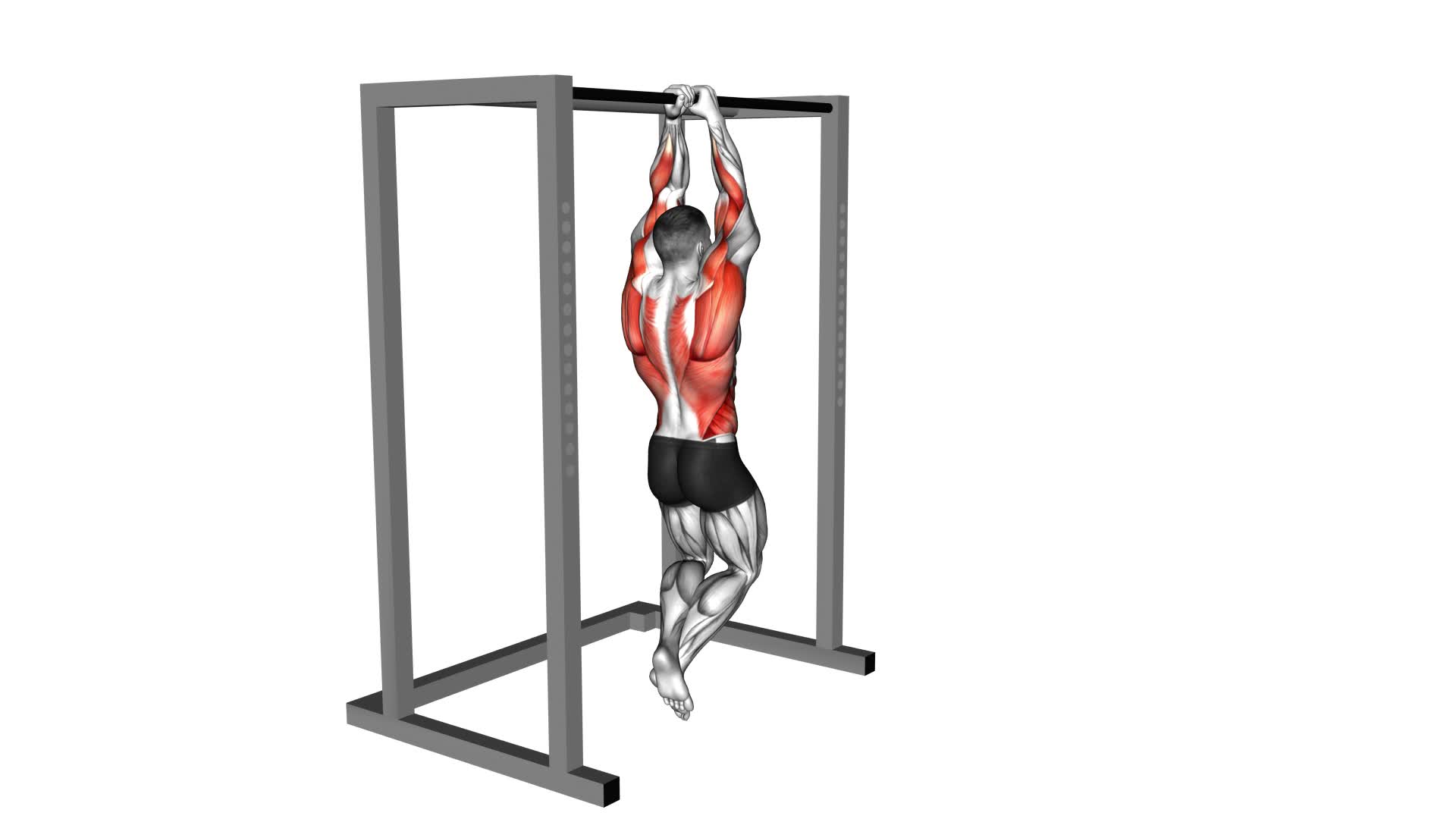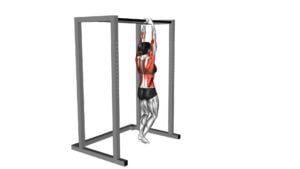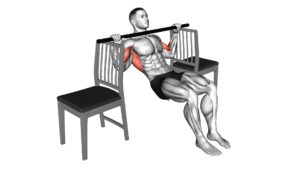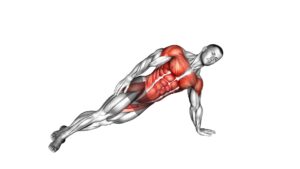Commando Pull-up – Video Exercise Guide & Tips

Looking to challenge your upper body strength? The Commando Pull-up is here to push you to your limits. In this video exercise guide, we'll show you the proper form and technique, along with variations for all fitness levels.
Watch This Exercise Video
Avoid common mistakes and get ready for progression and challenge as you conquer this intense workout. Get ready to take your pull-up game to the next level with our Commando Pull-up video exercise guide and tips.
Let's get started!
Key Takeaways
- The Commando Pull-up activates multiple muscle groups simultaneously, targeting the back, shoulders, and arms.
- Proper form and technique include maintaining a shoulder-width grip, avoiding momentum, engaging the back muscles, and controlling the movement.
- There are variations for all fitness levels, including assisted pull-ups, eccentric pull-ups, and weighted pull-ups.
- Common mistakes to avoid include relying on momentum, not fully extending the arms, gripping the bar too tightly, and swinging the body.
Benefits of the Commando Pull-up
To maximize your upper body strength and target multiple muscle groups simultaneously, the commando pull-up offers a highly effective exercise option. This variation of the traditional pull-up primarily activates the muscles in your back, shoulders, and arms, helping to develop and strengthen your upper body. The commando pull-up specifically targets the latissimus dorsi, which is the largest muscle in your back responsible for pulling movements. By engaging this muscle, you can enhance your overall upper body strength and improve your posture.
In addition to the latissimus dorsi, the commando pull-up also activates the muscles in your biceps, triceps, and forearms. As you pull your body weight up, your biceps contract, providing an excellent opportunity for muscle growth and definition. The triceps, located on the back of your upper arm, work to stabilize and extend your elbow joint during the exercise. Furthermore, the forearms play a crucial role in gripping the pull-up bar, promoting grip strength and overall upper body stability.
Proper Form and Technique
To perform the commando pull-up with proper form and technique, it's essential to maintain control and engage the targeted muscle groups throughout the exercise. Many people make common errors when attempting this exercise, but with the right guidance, you can avoid these mistakes and maximize the benefits of the commando pull-up.
One of the most important aspects of proper form is having a proper grip. Make sure your hands are shoulder-width apart and facing away from you. This grip allows for a stronger engagement of the back muscles and prevents excessive strain on the wrists. It's also crucial to maintain a firm grip throughout the entire movement to ensure stability and control.
Another common error to avoid is using momentum to swing your body up. Instead, focus on using your back muscles to pull yourself up in a controlled manner. Engage your core and squeeze your shoulder blades together as you pull your chest towards the bar. This will help you maintain proper form and target the muscles effectively.
Variations for All Fitness Levels
For all fitness levels, there are various modifications and adaptations of the commando pull-up that can be implemented to cater to individual abilities and goals. Whether you're a beginner looking to build strength or an advanced athlete aiming to challenge yourself, there are modification options available to help you progress at your own pace.
Here are three modification options to consider:
- Assisted Commando Pull-ups: If you're just starting out or find the commando pull-up too challenging, you can use a resistance band for assistance. Attach the band to the pull-up bar and place one foot or knee in the loop. This will help reduce your body weight and make the exercise more manageable.
- Eccentric Commando Pull-ups: This variation focuses on the lowering phase of the exercise, which is known as the eccentric phase. Instead of pulling yourself up, focus on slowly lowering your body down in a controlled manner. This modification allows you to work on building strength without the need for full pull-up strength.
- Weighted Commando Pull-ups: For those seeking an additional challenge, you can incorporate weight by using a weight belt or holding a dumbbell between your feet. This will increase the resistance and make the exercise more demanding, helping you to further develop your upper body strength.
No matter which modification you choose, you'll need a pull-up bar or a sturdy horizontal bar to perform the commando pull-up. Ensure that the equipment is secure and can support your body weight before attempting the exercise.
Common Mistakes to Avoid
Avoid these common mistakes when performing the commando pull-up to ensure proper form and maximize the effectiveness of the exercise.
One common mistake is using momentum to complete the movement. Instead of relying on your body's momentum to pull yourself up, focus on using your back muscles to initiate the movement. This will engage the targeted muscles more effectively and prevent strain on your shoulders.
Another mistake to avoid isn't fully extending your arms at the bottom of the movement. It's important to start each rep with your arms fully extended to get the full range of motion. This will engage your muscles more effectively and prevent any imbalances or potential injuries.
Additionally, be mindful of your grip. Many people tend to grip the bar too tightly, which can lead to excessive tension in the forearms and wrists. Instead, aim for a firm but relaxed grip to allow for smooth and controlled movement.
Lastly, avoid swinging your body or using excessive lower back arching to generate momentum. This not only decreases the effectiveness of the exercise but also puts unnecessary strain on your lower back. Maintain a stable and controlled body position throughout the movement.
Tips for Progression and Challenge
To continue progressing and challenging yourself with the commando pull-up, it's important to gradually increase the difficulty of the exercise while maintaining proper form and technique. Here are some progression tips and advanced techniques to help you take your commando pull-ups to the next level:
- Increase the resistance: Start by adding weight to your pull-ups using a weighted vest or a dip belt. This will challenge your muscles even more and help build strength and endurance.
- Vary your grip: Experiment with different grip variations such as wide grip, narrow grip, or neutral grip. Changing your grip not only targets different muscles but also adds variety and keeps your workouts interesting.
- Incorporate plyometrics: Once you have mastered the basic commando pull-up, you can add explosive movements such as clapping pull-ups or muscle-ups. Plyometric exercises not only increase power and speed but also enhance overall athleticism.
Frequently Asked Questions
How Long Does It Take to Master the Commando Pull-Up?
Mastering the commando pull-up can take some time, but with consistent practice, you can get there.
Start by familiarizing yourself with different commando pull-up variations to challenge your muscles in various ways.
Common mistakes in mastering this exercise include not engaging your core properly and relying too much on your biceps.
Focus on maintaining proper form and gradually increase the difficulty level.
Can I Do the Commando Pull-Up if I Have Shoulder Injuries?
If you have shoulder injuries, it's important to modify the commando pull-up to avoid further damage.
Start by using a neutral grip or a wider grip to reduce strain on your shoulders.
Additionally, focus on engaging your core and back muscles to take some of the load off your shoulders.
To prevent shoulder injuries while performing the commando pull-up, make sure to warm up properly, maintain proper form, and listen to your body.
Are There Any Alternative Exercises That Target Similar Muscles as the Commando Pull-Up?
If you're looking for alternative exercises that target similar muscles as the commando pull-up, there are a few options you can try.
One option is the inverted row, which targets the back and biceps muscles.
Another option is the lat pulldown, which also works the same muscle groups.
Additionally, you can try the assisted pull-up machine or resistance band pull-ups to build strength in those muscles.
Remember to always listen to your body and consult with a professional if you have any concerns or injuries.
How Many Sets and Reps Should I Do for the Commando Pull-Up?
To determine how many sets and reps you should do for the commando pull-up, consider your fitness level and goals. Start with 3 sets of 8-12 reps, with a 1-2 minute rest between sets. As you get stronger, gradually increase the number of reps or sets.
The commando pull-up is a great exercise for the upper body, targeting the back, biceps, and shoulders. It improves grip strength, builds muscle, and enhances overall upper body strength.
Is It Necessary to Use Any Additional Equipment or Grips for the Commando Pull-Up?
To perform the commando pull-up properly, it isn't necessary to use any additional equipment or grips. However, it's important to focus on your form and technique.
Make sure to start with a wide grip and pull yourself up while keeping your body straight. Avoid using momentum or swinging your body, as this can lead to less effective results and potential injury.
Stay controlled and engage your back and arms throughout the exercise.
Conclusion
In conclusion, the Commando Pull-up is a highly beneficial exercise that targets multiple muscle groups and improves upper body strength.
By maintaining proper form and technique, individuals of all fitness levels can perform variations of this exercise to challenge themselves and progress over time.
It's important to avoid common mistakes, such as swinging or using momentum to complete the movement. This can lead to improper muscle activation and potential injuries.
With consistent practice, individuals can achieve their fitness goals and experience the full benefits of the Commando Pull-up. This includes increased strength in the back, shoulders, and arms, as well as improved grip strength.
Remember to listen to your body and start with modifications or assistance if needed. Gradually increase the intensity and difficulty of the exercise as you become more comfortable and stronger.
Overall, incorporating Commando Pull-ups into your workout routine can be a great way to build upper body strength and challenge yourself physically. So give it a try and reap the rewards of this effective exercise.

Author
Years ago, the spark of my life’s passion ignited in my mind the moment I stepped into the local gym for the first time. The inaugural bead of perspiration, the initial endeavor, the very first surge of endorphins, and a sense of pride that washed over me post-workout marked the beginning of my deep-seated interest in strength sports, fitness, and sports nutrition. This very curiosity blossomed rapidly into a profound fascination, propelling me to earn a Master’s degree in Physical Education from the Academy of Physical Education in Krakow, followed by a Sports Manager diploma from the Jagiellonian University. My journey of growth led me to gain more specialized qualifications, such as being a certified personal trainer with a focus on sports dietetics, a lifeguard, and an instructor for wellness and corrective gymnastics. Theoretical knowledge paired seamlessly with practical experience, reinforcing my belief that the transformation of individuals under my guidance was also a reflection of my personal growth. This belief holds true even today. Each day, I strive to push the boundaries and explore new realms. These realms gently elevate me to greater heights. The unique combination of passion for my field and the continuous quest for growth fuels my drive to break new ground.







